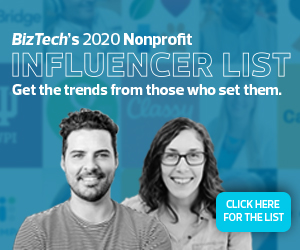The global health crisis is a generation-defining event that fundamentally altered how our society operates. In a matter of days, how Americans work, live and interact with each other was forever changed. Most of these changes drastically increased the demand for social services.
In the wake of this crisis, most nonprofits face increased need with fewer resources. Some medical and educational organizations have access to additional funding to help them achieve their missions. While this funding helps, it is often just a bandage on a deep wound. On the other hand, most nonprofits face stiff fundraising headwinds. High-value, in-person fundraising events are no longer an option. These challenges coincide with the critical need to invest in technology to both support remote workforces and continue to deliver their services.
Digital donations are critical for nonprofits to continue. Using data analytics software to personalize asks and demonstrate impact can help organizations get the extra boost they need to maintain operations.
Make Your Donors’ Contributions Tangible
Today’s donors are savvier and focus on individual impact. When deciding where to give, they want to make sure that their money is going directly toward the cause that they are advocating for. Knowing exactly what their donation is paying for can make them more likely to marginally increase their donation or make a second gift.
Data is critical for nonprofits to tell their impact story to today’s donors. An organization must be able to demonstrate to donors that they are worthy of the gift. People want to know the impact their donor dollars buy — regardless of donation size.
Nonprofits need to have good data analytics capabilities to calculate and communicate their impact. Most track resources out of necessity, but visualizing that information for donors gives organizations an advantage when soliciting donations.
MORE FROM BIZTECH: The role of social responsibility in the nonprofit playbook.
Responsive Fundraising Is More Important Than Ever
Sending prospective donors generic fundraising materials is a bit like giving a significant other an unsigned greeting card for a special occasion: It is tone-deaf, it will alienate the recipient, and it will not result in a donation.
Donors expect a personalized experience from the organizations they support. A reliable monthly patron is fundamentally different from a high-net-worth donor who made a one-time gift five years ago. Organizations should not treat these two the same.
Responsive fundraising analyzes donor information and history to deploy a more targeted ask. Today’s cutting-edge donor management tools alert fundraisers when a contributor might be ready to make a new donation or has achieved a giving milestone. These tools allow nonprofits to target donors where they are on their giving journey, which increases the likelihood of converting them.
Marginal Improvements Add Up for Nonprofits
The two big fundraising hurdles for nonprofits are getting someone to make the first donation, and then getting them to make a second donation. People who make a second donation are much more likely to become lifelong contributors. Convincing patrons to make that second donation can be a battle of inches.
Focusing on marginal improvements can turn the tide. Setting online-giving portals to default to monthly rather than one-time gifts is an easy nudge for donors. Suggesting small increases in donation amount can reap massive benefits in the long run. Organizations can increase the chance of upping these donations with strategically placed offers and targeted emails. Together, these small changes can yield large outcomes.
There are also website considerations that can help nonprofits get that extra funding. Having a clean professional web presence is not only appealing but also can give potential donors more trust in the organization and their mission. Nonprofits can also set the default for donations to be a recurring payment rather than a one-time gift, presenting the donor with the need to opt out of making a monthly gift instead of opting in.
Every dollar counts, now more than ever. Nonprofits must maximize every digital donation to fund their mission. By using data to tell a story, personalizing materials and targeting individuals along their donor journey, organizations can still make the impact we need during these lean times.












